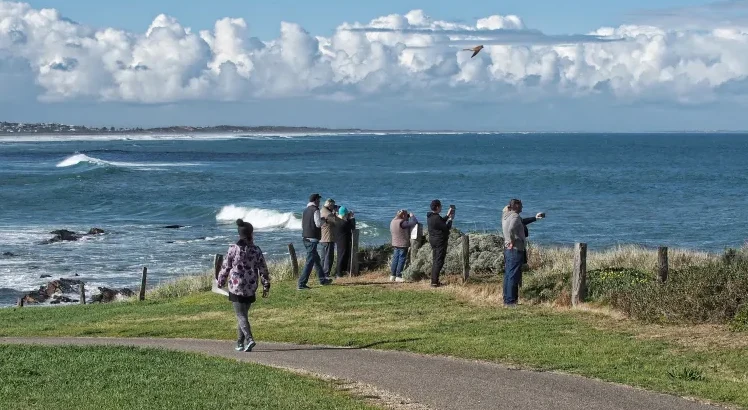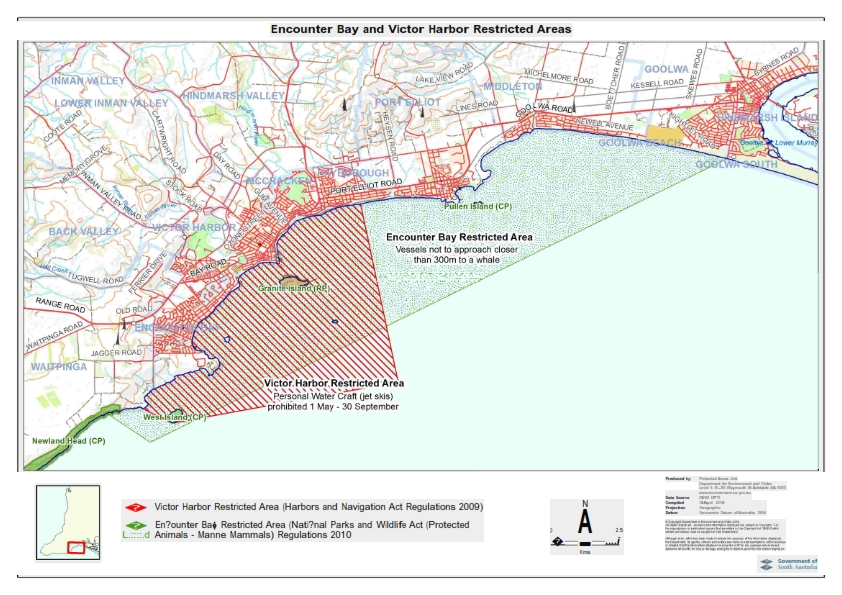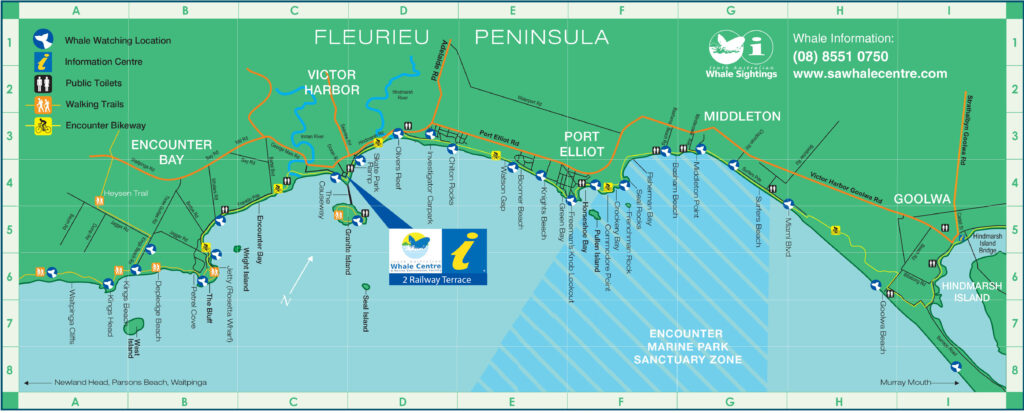Whale Watching
Whale watching in south australia
During the cooler months, the South Australian coastline becomes nursery grounds for the majestic Southern Right Whales who gather in our pristine waters as they feed their young ready for their long journey back to the Antarctic Waters.,
Sightings of these majestic creatures usually begin around June through to September, with thousands of visitors adorning the Fleurieu coastline to spot a Southern Right Whale.
Whale Spotting Locations
Whales often can be spotted along the Southern Fleurieu Peninsula coastline. Along the coast there is a myriad of whale watching hotspots and lookouts that provide uninterrupted views of the ocean. Visit us at 2 Railway Terrace today to pick up your copy of the Whale Watching Map.
Whale Watching Tips
Know Your Locals
The Southern Right Whale (Eubalaena australis) is one of the most common whales found in South Australian waters. Southern Right Whales are grey to black in colour, with white growths on their head known as callosities. They often have white patches on their belly known as “blazes” and have no dorsal fins, unlike other whale species.
Southern Right Whales are a baleen whale, which means they filter their food through sieve like structure in their mouth, then using their tongue to lick the microscopic krill and plankton which remain.
Like most baleen whales Southern Right Whale have two blow holes which give distinctive V-shaped blow. They are a large creature measuring up to 17 metres long, with paddle shaped flippers. Southern Right Whales visit the South Australian shores from June to September to birth and care for their calves in our sheltered waters.
Which Whale?
Be Prepared
Know Your Directions
Learn Your Whale Watching Terminology
Find a Good Vantage Point

Be Patient
Rules and Regulations


